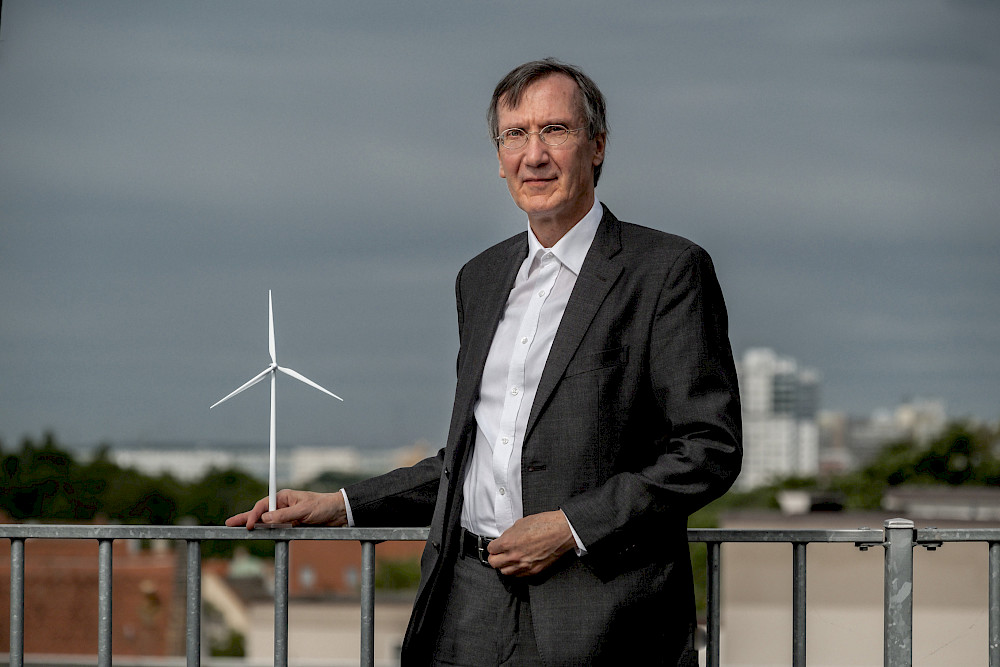“A poster in the community hall is not enough”

Dr Pohl, you have been researching the acceptance of wind turbines for over 15 years. Has there been a fundamental change in people’s attitudes during this time?
No, we have not observed a fundamental change. The vast majority of people in Germany take a positive view of wind energy, regardless of the region in which they live. When we look at specific projects, we find that about eighty per cent of local residents usually rate the project positive or at least neutral.
What concerns and fears do people who are sceptical of wind energy have?
People reject wind energy for a wide variety of reasons, some of which are rather ideological. It is either impossible or very difficult to convince these people, even when they are presented with plausible arguments. However, their concerns and fears are also understandable – that turbines will affect the landscape, that real estate in the community will be devalued, or that the wind turbines will cause physical or psychological complains.
You investigate such complains. How seriously should they be taken?
Every nuisance should be taken seriously. For example, for those affected, it is the perceived annoyance, not the measured sound level, that is decisive. One person may not feel affected by the rotor noise at all, while their neighbour has to close the window to sleep. Of course, we try to look at such effects objectively – with quite surprising results.
For instance?
In one of our studies, about one in ten residents living in the immediate vicinity of wind turbines complained of moderate noise annoyance linked to symptoms. It is interesting to note that three quarters of this group were against the erection of the turbines from the start – even though, traffic noise led to a significantly greater annoyance locally.
How can the annoyance be reduced further?
A lot has been done in recent years – both in terms of design and guidelines. The shape of the rotor blades has reduced noise, and matt paint has eliminated light reflection. The guidelines now stipulate that wind turbines must be switched off if they cast a shadow on a property for more than thirty minutes a day.
Are wind turbines accepted more when they are located far away?
It is often assumed that people have a positive attitude about wind power as long as the turbines are not built close to where they live. This is not the case; at least, our studies and international studies almost always find no correlation between distance and acceptance.
Are there other factors that influence the acceptance of wind energy?
One very important acceptance factor is economic participation. Those who benefit financially rate wind turbines in their immediate vicinity more positively than those who do not benefit financially – be it in the form of shareholdings or through lower electricity costs.
So, more money is needed to increase the acceptance of wind energy?
Our studies have identified a more promising approach: people need to be involved much more in the planning process than they have been up to now, right from the start. This significantly increases trust in the project and in the stakeholders – the community representatives, authorities and operating companies. More is needed than just two informational events and a poster hung up in the community hall. It requires more creativity.
Can you give any examples?
We collaborated with the Technical University of Munich and ETH Zurich to test a dome for presenting offshore wind farms near the Baltic Sea to local residents and tourists. The dome has a curved screen where viewers can look at the wind turbines from different perspectives at different times of the day and under various weather conditions.
What were the results?
People are generally more sceptical of offshore wind farms located close to the coast than of those farther away from the coast. They are particularly afraid that they will have a detrimental impact on the landscape. The realistic presentations were often able to dispel such fears – the better the wind farms were integrated into the seascape, the more positively they were evaluated.
Will the dome set a precedent?
No, it is technically too complex. But virtual reality glasses can give people a similar experience. Attention should be paid to presentations on the internet as well – not only should they always be kept up to date, they also need to include more interactive elements. This applies to the planning process as well as to things like assessing noise annoyance. In southern Germany, we are currently testing an app in which residents document annoying noises.
Are people taking advantage of these opportunities to participate?
Much more than many people would think. People are immensely motivated when they feel involved in the planning process and are able to take responsibility for their local area. And it sometimes leads to surprising results: In a simulation game conducted in one district in Bavaria, people were asked to freely choose their form of renewable energy supply. They initially preferred photovoltaics. When the simulation then showed which areas of land would have to be sacrificed for solar farms, there was suddenly a new preference: wind power.
Further articles
The art of change
The climate crisis and energy transition are a topic for many different scientific disciplines. A German studies scholar at the university is examining how art and literature are tackling these issues. Read more
